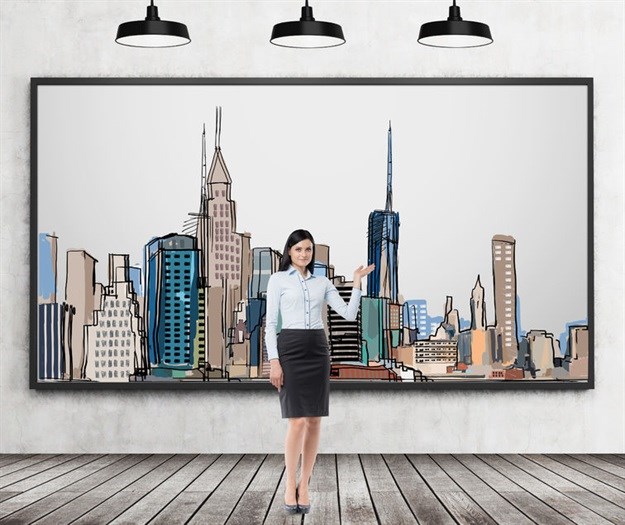
The most common areas where you’ll find artworks are public areas, including the lobby, reception, and meeting spaces. These spaces are often thoughtfully decorated with comfortable seating and decorative plants to provide a welcoming environment to host clients. Introducing a bright, bold art piece can provide a focal point in a common area, spark conversation amongst clients and employees, and serve as a visual reminder of a creative and dynamic corporate culture.
In addition to its aesthetic effect, artwork can also serve a more practical function, for example sound-dampening and echo reduction (textiles and sculptural works in large open areas, for example). Art can even be creatively incorporated into way-finding signage.
But don’t get stuck in the habit of thinking of art as simply decorative or functional. A company chooses visual art that sends messages about key mission statements and corporate goals. For example, a company that places a high value on engaging with the community in which it operates can highlight this investment by displaying works from that community.
The opposite is also true – a company with a strong international focus might choose a more global approach and bring into its spaces artworks from the various countries it operates in.
Art can assist in other corporate goals as well: a dynamic and engaged art collection might comprise part of a company’s corporate social responsibility (CSR) mandate through supporting local art and craft initiatives, or creating meaningful relationships with local artists, art collectives, galleries, and project spaces.
And while the most obvious reason to bring art into the office is aesthetic, there are proven tangible productivity benefits as well. A picture may be worth a thousand words, but in the case of art in the workplace, a picture (or sculpture, or photograph) can be worth a whole lot more.
Studies have shown that art can enhance the work environment and increase productivity and creativity. A 2003 survey in the United States by the Business Committee for the Arts and the International Association of Professional Art Advisors found that 64% of surveyed businesses saw an increase in productivity of employees; the same study found a significant reduction in stress. And in terms of thinking outside the box, a 2013 study in the UK by the British Council for Offices found that 61% of workers believed that the presence of artwork in their workspace inspired them to think and work more creativity.
Last but not least, did you know environments with an artistic touch can also help with staff retention? A study by psychologist Dr. Craig Night at the University of Exeter showed that artwork can not only help with staff retention but, in an era when many people choose to work remotely, can also encourage employees to come in to the office.
So if your company is looking to create an inviting, productive, creative environment that employees want to come to, take a look around at your walls and consider replacing your worn out, dusty prints or inspirational posters with new and invigorating works of original art.